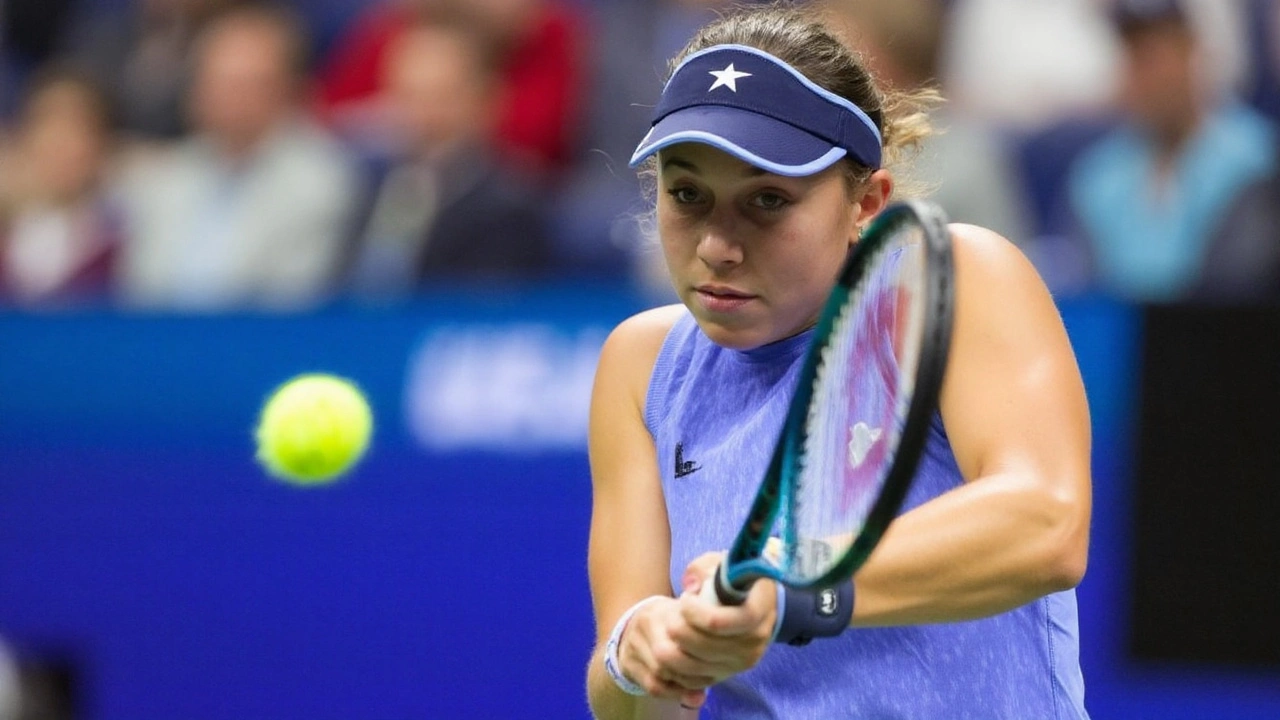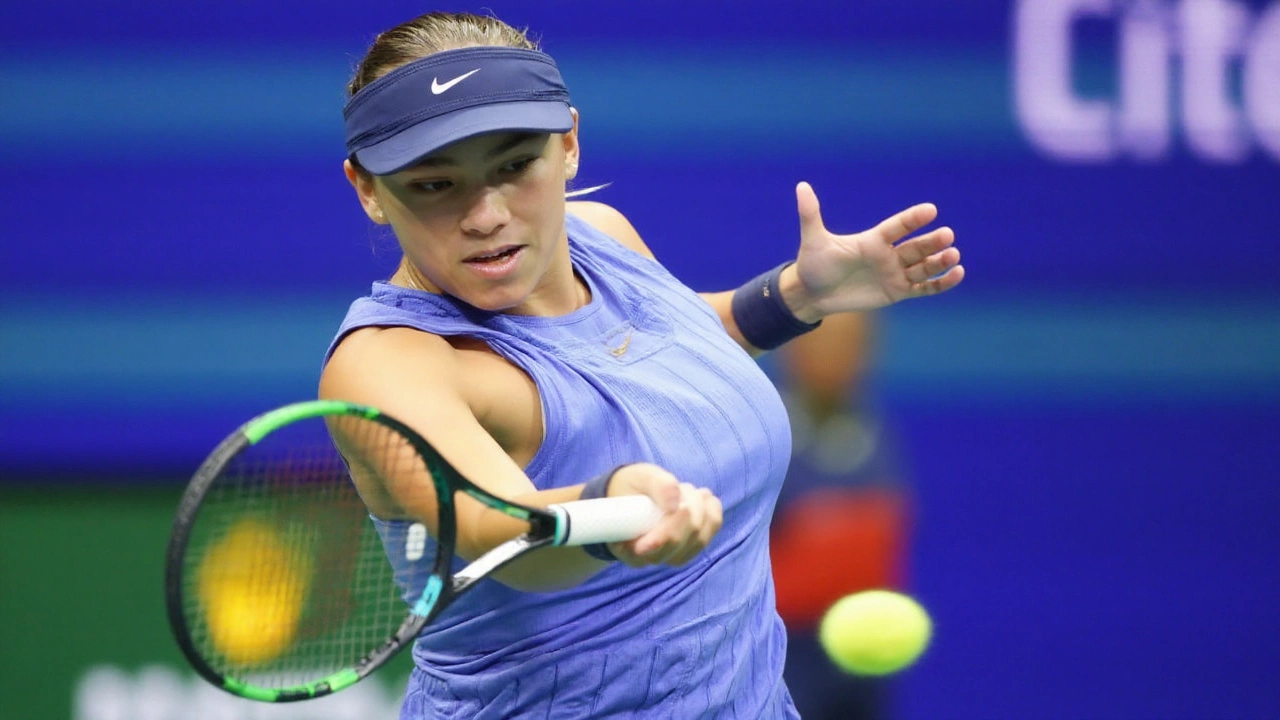Anisimova flips the script under the Ashe lights
Under the thick New York night and a restless crowd that refused to go home, Amanda Anisimova shattered a streak that once looked untouchable. Naomi Osaka came in unbeaten in Grand Slam semifinals and finals, but the American dragged her into the deep end and kept her there, closing a three-hour thriller 6-7, 7-6, 6-3 around 1:00 a.m. on Arthur Ashe Stadium. For a player carrying the scars of a 6-0, 6-0 Wimbledon final loss just weeks ago, it was a steel-nerved turn. For the event, it was the purest kind of theater the US Open 2025 promises every year.
The path to the finish was jagged. Anisimova dropped a tight opening-set tiebreak, then held her ground through another breaker in the second, where she stepped in on returns and took Osaka’s second serve early. In the decider she broke first, surged to 4-1, and earned two match points at 5-3. Osaka, who has made a career out of flipping scripts at the last second, rifled one return winner up the middle and erased the next with more fearless hitting. Anisimova didn’t blink. She played the next points on her terms, finished at 6-3, and let out a release that sounded more relief than roar.
The shift came from the baseline. Anisimova’s ball striking is straight-line and early-contact; when she times it, she doesn’t so much hit through opponents as take their time away. After the first set, she started taking Osaka’s pace and sending it back sooner, flattening out down the line with her backhand and forcing shorter replies. She stood closer on return, changed looks on the second serve, and stopped giving Osaka rhythm in neutral rallies. The errors that hurt her at Wimbledon didn’t pile up here late; she managed the margins better, especially when the pressure swelled.
Osaka had her surges. The serve popped in the tiebreaks, and when she connected off the forehand, points died quickly. But long exchanges tilted Anisimova’s way in the third, and Osaka’s first-strike patterns were harder to land once the American kept the ball deep through the middle. Still, the Japanese star fought off two match points with the kind of uncluttered aggression that made her a four-time major champion. She simply ran into a player who refused to retreat from the baseline or the moment.
For Anisimova, this wasn’t just a good win; it was a correction. After that bleak Wimbledon final against Iga Swiatek, she circled the rematch and got it in New York, beating the world’s most reliable defender in straight sets and breaking serve four times in the quarterfinal. That result changed her week. It also rewired the narrative around a player who has long carried the tag of “dangerous” without the consistent major results to match it.
Her rise was never quiet. At 17, she reached the 2019 Roland Garros semifinal with fearless, flat-ball acceleration that looked built for hard courts. Real life intervened—family tragedy, time away, and a break in 2023 to protect her mental health. The 2024 comeback was steady more than loud. Now she has back-to-back Slam finals, a résumé checkpoint that separates streaks from seasons.
Osaka’s story is running on a parallel track. Returning in 2024 after maternity leave, she rebuilt piece by piece: timing, movement, and the point-by-point patience that sits underneath her aggression. The weapons are still there, and in flashes—especially on the tiebreak points in New York—they looked as heavy and sure as ever. She leaves with a reminder that her ceiling stays high on hard courts and a map of what still needs sharpening for closing time in long matches.
The setting mattered too. The night session on Ashe has a way of squeezing and lifting players in equal measure. The crowd rode every pitch and inhale, chanting for the American when she backed into corners and groaning when Osaka stung another line. That energy didn’t just make noise; it set the rhythm. Anisimova used the moment to push forward early in rallies. Osaka doubled down on first-strike tennis. For a few hours, the stadium felt less like a court and more like a ring.

Sabalenka awaits: power vs poise
Waiting on Saturday is Aryna Sabalenka, the world No. 1 and defending champion in New York, who outlasted Jessica Pegula 6-4 in the third in the other semifinal. The matchup arrives layered with tension. Anisimova beat Sabalenka in the Wimbledon semifinal earlier this summer. And in a twist Sabalenka would rather not relive, every one of her Slam losses this year has come to an American—Madison Keys in the Australian Open final, Coco Gauff in the French Open final, and Anisimova on grass.
That history is real, but so is Sabalenka’s weight of shot. She doesn’t just hit big; she brings balance and improved decision-making to big points compared with earlier seasons. Her return game, especially on second serves, has become a blunt tool for flipping sets. The question now is whether she can steady the first serve in the tightest games and avoid the brief spirals that have cost her a handful of title points this year.
For Anisimova, the blueprint looks similar to what worked against Oska—take the ball early, send depth down the middle to mute angles, and pick safe corners before uncorking the down-the-line redline shots. Against Sabalenka’s heavier ball, that means more blocked returns and a willingness to defend a half-step deeper before rushing back on the next shot. If she follows through on serve location—into the body to jam the forehand, wide to open the backhand line—she can keep the world No. 1 from setting her feet.
There’s also the mental math. Sabalenka spoke this week about leaning into pressure instead of pushing it away, and it showed against Pegula when the crowd tilted red, white, and blue. Anisimova, for her part, has spent the tournament solving one emotional test after another—from the Swiatek rematch to Osaka’s late-match surge. Saturday isn’t just speed and power; it’s about who trusts their patterns when the lungs are burning.
Here are five pivot points that could decide the title:
- Second-serve pressure: Both can crush second serves. The player who protects that side of the ledger in 4-4 games has the edge.
- Backhand down the line: Anisimova’s cleanest strike vs. Sabalenka’s improved movement. If Anisimova lands it early, she opens the forehand court.
- First-strike accuracy: Sabalenka’s first serve sets the tone. If she keeps her first-serve percentage steady late, she shortens games and scoreboard pressure.
- Depth through the middle: It’s ugly but effective. Deep, central hitting can blunt Sabalenka’s angles and give Anisimova time to counterpunch.
- Crowd management: The noise will lean American. Sabalenka must ride, not fight, that wave; Anisimova has to harness it without overhitting.
The stakes are clean. Anisimova is one win from a first Grand Slam title, on home soil, with the kind of New York backing that can carry a player through flat patches. Sabalenka is one win from defending her crown in a season that’s tested her in every Slam final she’s reached. She’s also chasing a different kind of victory: ending the run of American roadblocks that has shadowed her year.
One more thread ties the week together: timing. When these two met at Wimbledon, Anisimova got the first strike in more rallies and protected her serve in the tightest moments. Sabalenka will aim to flip that split by taking earlier cuts on return and using the forehand as a field-position shot rather than a winner-hunt on every ball. If the exchanges get longer, Anisimova’s control at shoulder height could turn points her way. If they stay short, Sabalenka’s first ball decides everything.
Osaka leaves with a ledger that still reads hopeful. She shook off rust, went toe-to-toe under the lights, and proved she can still hit through elite defenders when it counts. The semis may sting, but the baseline framework is there for a run on hard courts next season. And in New York, where the nights stretch and the margins shrink, she reminded everyone that a match isn’t over until she says it is.
Saturday gives us clarity, not just a champion. Either Anisimova finally collects the major her talent has teased since her teenage breakout, or Sabalenka reasserts hard-court authority and shuts down the most persistent storyline of her 2025 season. After a midnight classic, the bar is set. The last match of the fortnight has plenty of room to clear it.
